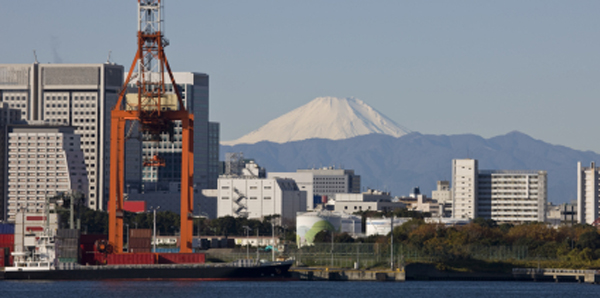I’ve intentionally held off from discussing the Japan earthquake/tsunami/nuclear meltdown story because I fear the absolute worst from this situation and I hate being an alarmist. I will return to cover the topic again soon, but for now wanted to highlight the all too real situation of Japan’s electronics supply chain.
As we’re all well aware, the earthquake/tsunami and their aftermath has directly impacted production facilities in Japan. The scope of the impact has been much larger than the initial damage inflicted at plants in northern Japan, since there has been a much larger breakdown of the country’s infrastructure (a lack of power supply and a general transportation breakdown are the main causes currently). This means that even if different plants are currently capable of operating at full capacity, there is no way to reasonably move their goods within Japan to the different distribution centers, ports, etc. that warehouse supplies before they are directly shipped abroad. A compounding issue is that many global shippers have voluntarily stopped all traffic to Tokyo and Yokohama due to radiation concerns from the damaged Fukushima Daiichi nuclear power plant to the north. While some shippers appear ready to resume calls into Tokyo in early April, with all of the current unknowns regarding radiation levels, they will be taking on extraordinary risk should any vessel become contaminated (some industry experts believe that any contaminated or quarantined ship may ultimately have to be discarded because of the huge scrutiny and corresponding time delays it would face at many ports for many years into the future). This leaves a huge cloud of uncertainty over the Tokyo bay ports which account for an estimated third of Japan’s entire shipping volume.
All of the above has placed extraordinary pressure on many companies that depend on Japan for its supplies – one example is printed circuit boards and their related components [Sidebar: Auto parts and electronics are Japan’s two largest classes of container goods]. The supply challenge however isn’t exactly immediate since fully loaded ships from Japan are still landing in Europe and the US. Assuming shipping soon resumes to earlier levels, most Japanese suppliers will be able to tap into current inventory to fill the channel for some time. The big supply challenge is what will happen in May if when companies’ and their suppliers’ current 30, 45, or 60-day supply stockpiles have dwindled and production has not ramped.
Already, calls into brokers are finding big increases in pricing, with pricing increases of more than 100% seen by several of the sourcing pros I spoke to this past week. One of the challenges in using brokers in these emergency situations is that the initial calls themselves can serve to intensify pricing pressure. As such, VPs and Directors of Direct would be very wise to control, aggregate, and actively manage all calls to brokers in an attempt to avoid what could be called “self-competition.”
Here’s a very real scenario of self-competition.
(1) one buyer from a company calls a broker about sourcing a category; (2) at the same time, another buyer from the same company calls the same broker (or a different broker) about the same sourcing need; (3) those demand inquiries hit the same channel and appear as two separate blips which will indicate greater competition and greater demand and higher pricing than what is actually warranted.
As one sourcing executive, faced with precisely this issue, told me this week “it’s time to seek savings dispensation from the powers that be. Sourcing savings will not be possible for many of my team’s categories this year. The huge victory will be in finding the supply. We need to re-frame the discussion now.”


Andrew,
I hope you’re doing well – we encountered one another briefly. Andy Reese from SDCE and I were speaking – I very much agree and enjoy your commentary here. I’d be curious if you have any other research or information about this topic.
You may or may not be aware of this, in summary, i’m Director Global Product Marketing across Supply Chain and Design at IHS which includes touches with electronics value chain from iSuppli, as well as other touches to Global Insight for example or Electronics Obsolesence and Parts Management. You should check out our iSuppli.com site for webcasts as well as SDCExec.com/aftershocks we’re doing.
Cheers – great article – let me know if you have more info or examples of the broker behavior.
Rory
Rory
Rory –
Thanks for the comment.
I have spoken with several teams that are scrambling and will soon be facing some very difficult times; I’ve also had some inquiries from a few money managers (but, no media as yet).
I have been trying to get through a backlog of CPO interviews for the CPOs on the Rise in ’11 series so have not had time to publish any new articles on the topic.
I think we are just now on the cusp of seeing a real impact and I fear this will be a big issue for quite some time.